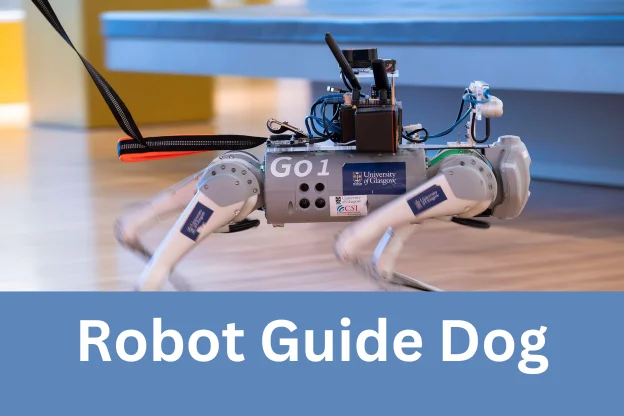- Your cart is empty
- Continue Shopping
How Robot Guide Dogs Are Changing the Lives of Individuals

Guide dogs have long been an important help for persons with visual injuries, offering freedom and flexibility. However, improvements in technology have led to the growth of robot guide dogs, which are composed to change the lives of those with incapacities.
Guide Dogs vs. Robot Guide Dogs
Training Process
Traditional guide dogs undergo extensive training with professional instructors over several months. In contrast, robot guide dogs are programmed and calibrated to respond to various commands and navigate environments autonomously.
Maintenance and Upkeep
Traditional guide dogs need regular training, exercise, and veterinary attention. On the other hand, robot guide dogs necessitate software updates and occasional maintenance but eliminate the need for feeding, grooming, and physical activity.
Advantages of Robot Guide Dogs
Accessibility
Robot dogs can be more accessible to individuals with allergies or other restrictions that prevent them from having a traditional guide dog.
Adaptability
Robot dogs can be modified to suit individual wants and preferences, offering an advanced level of flexibility compared to their dog counterparts.
Affordability
While traditional guide dogs incur important costs for training, care, and insurance, robot dogs may show to be a more gainful answer in the long run.
Personal Stories of Individuals with Disabilities
Improved Independence
Many individuals with disabilities have described new freedom and confidence with the help of robot guide dogs, allowing them to cross their environments more efficiently.
Enhanced Safety
Robot dogs are well-found with advanced devices and navigation schemes, decreasing the risk of accidents and improving complete care for their users.
Challenges and Limitations
Technological Constraints
Despite their probable, robot dogs still face technical limits such as battery life, reliability in difficult environments, and weakness to software glitches.
Social Acceptance
Some individuals may feel hesitant or resistant to accept robot guide dogs due to their unfamiliarity or perceived lack of emotional connection compared to traditional guide dogs.
Future Prospects and Innovations
Investigators and engineers continue to improve the abilities of robot guide dogs, including artificial intelligence and machine learning algorithms to improve their functionality and user experience.
Conclusion
Robot dogs represent an important development in assistive technology, offering improved accessibility, flexibility, and affordability for persons with disabilities. While they may not completely replace traditional guide dogs, they provide a promising alternative that can positively influence countless lives.



